|
A few years ago, my wife and I took our 4-year-old daughter and 18-month-old son on a 6-month adventure across Australia. We did this because I was writing two books about travel Down Under, and because we are insane. Since our hard-earned experience might be of use to other parents, I thought I'd share some of the practical sections from my bestselling Australian book: 75 Must-See Places to Take the Kids (before they don't want to go). It might save your soul and sanity, and no matter how old your kids are, will likely make you laugh. Food has always been a vital component of travel. Every meal is an opportunity to saviour new cuisines, sparking conversation and connection. It’s a special time to sit back, relax, and indulge. When you’re travelling with young children, forget all that.
The rule of thumb is that the more expensive the restaurant, the less likely your children will actually eat anything of nutritional value, and the more likely they will throw a full-tilt meltdown because their crayon isn’t the right shade of forest green. The formula of your typical family travel meal: Location: A small town restaurant with a fridge buzzing at an almost intolerable volume, but which the owners don’t seem to hear or mind. Air-conditioning a plus. Enter: Family of four, two kids under five. After walking around looking for somewhere to eat for twenty minutes, if you even suggest finding somewhere else, your partner will call a divorce lawyer, or possibly, a hit man. High Chair: Available in wood or plastic, with dried brown stains of mysterious culinary origin. Kids Menu: All major food groups represented, including fried chicken nuggets, fried fish, hamburgers, frozen pizza, grilled cheese sandwiches, and most importantly, chips. Apple juice is from concentrate and somehow contains both sugar and high-fructose corn syrup. Cost: Exactly one-third more than you’d expect to pay, but the kids’ meal comes with milk or apple juice, and that sounds healthy. Order: Nuggets for the one kid, grilled cheese sandwich for the other. Order placed immediately to get the kids fed as soon as possible. The Wait: Interminable. What are they doing, processing the fake cheese, looking for a bird to slaughter? Whines increase in volume and frequency until breaking point. Length of time used up for washing hands: Twenty minutes convincing your kid to do it, eight seconds when they actually do. Length of time used up for colouring books: Four minutes and twelve seconds, including one full minute of your two year-old chewing on the crayon before you notice. Length of time used up for reading books: Forty-five seconds. Length of time used up with apps on phone or tablet: No, don’t do it yet, wait until it gets really bad, or you need your hands to eat. The Food Pt 1: As your kids will gladly explain in high-pitched screams to everyone within the zoning district, they now want hamburgers and pizza, not chicken nuggets and grilled cheese sandwiches. No amount of cajoling convinces them otherwise, including threats of starvation, boarding school, or withholding stuffies at night - all of which amounts to more punishment for you than for them. Eventually you order the pizza and hamburger and realize that yet again, your partner and yourself will be dining on chicken nuggets and grilled cheese sandwiches. Reaction of Restaurant and Other Customers: A coin toss between heaven-sent patience (they have kids or grandkids) and barely contained annoyance (they don’t). The Food Pt 2: Ignored by both kids since by now they have raided the crackers and fruit you carry in the snack bag, and they are no longer hungry. On the plus side, they had a healthier lunch than the restaurant menu anyway, plus you can always bag their food for later, when it can be enjoyed cold and soggy, just the way no kid on Earth likes it. The Screen: OK, use it, do it, just get a few minutes to shove that terrible food into your face so you don’t become over-hungry and lose whatever patience you still cling to. The Bill: Never comes quick enough, always costs more, and always makes you question why restaurants don’t put carrots, crackers and apple on their menus because that’s all kids want to eat anyway – at least until they see that on a menu, in which case carrots, crackers and apples will become instantly toxic. Length of Ordeal: 30 to 45 minutes, during which time you can count on at least one potty break, one diaper change, one smashed toy, and possibly, a broken marriage. Remember: sit back, relax, and indulge in the cultural connections of new cuisines. There, isn’t that better? During our journey, we ambitiously took our kids to some wonderful restaurants, especially around Melbourne and Sydney’s Darling Harbour. It was our sincere hope we’d be able to expand our kids’ culinary horizons, allowing them to graduate to mild spices and unusual dishes. How proud I was when my daughter sampled crocodile, emu and kangaroo meats at the Adelaide Central Market (she drew her understandable limits at sampling citrus-nutty green ants from the Northern Territory). “This is dill-lish-shiss!” or a hearty “Mmmmmmm!” were not uncommon words out of her mouth. We definitely had memorable meals, although we often deployed the screen to keep the kids occupied long enough for all of us to enjoy it. Between eating in and eating out, it’s important to treat yourselves every once in a while and budget a little extra for good food. At the end of the day, good food keeps you healthy, if the kids are behaving, meals can indeed be the highlight of the day. Tip: We found food delivery services to be a family travel revelation, combining the ease of going out with the ease of staying in. Wherever possible, we preferred preparing our own meals in our holiday park cabins, Air Bnb’s and rental apartments. Even though we had to shop, cook and clean up, dinners are just simpler at home. We can feed the kids meals they’d actually eat, keep ourselves conveniently close to bathtubs, toys, paper towels, toilets, and TV shows on ABC Kids. Always on the move, we travelled with a box of condiments and staples, pickings up fresh produce wherever we went (our kids are constantly snacking on fruit and vegetables, which are abundant and excellent in Australia). Breakfasts are particularly important, and given our schedule, were often rushed. Cereal, smashed avocado toast, Uncle Toby’s porridge, Milo, eggs… and out the door.
Lunches were usually eaten out, hence the overflow of nuggets, sandwiches and chips, with pies coming to the rescue on more than one occasion. Home cooking have given our kids a taste for asparagus, broccoli, Brussels sprouts, mushrooms, and other vegetables I rejected as a child. Butter, lemon, salt and garlic pretty much saves the day with every veggie, along with olive oil and balsamic vinegar. Our kids love butter chicken, schnitzel, warm bread to dip into olive oil, hummus, and absolutely anything to do with cheese. Don’t they all? We didn’t always have time to prepare elaborate meals, but did have some go-to dishes, and pasta or rotisserie chicken available always in a pinch. There’s much to be said for the quality of packaged meats, chicken and salads available from supermarkets these days. In our household, Dad does the cooking, Mom does the baking, and everyone cleans up. There were occasional BBQ’s but unless you’re travelling with your own, they’re often a pain to clean up. If you need to make omelettes for dinner, do it. If you need to eat leftover chicken for breakfast, do it. Do whatever you need to, because any food in the belly pays dividends when you avoid hangry meltdowns in an hour or two. Bon voyage and bon appetit!
1 Comment
I spent six months travelling across Australia to research my two books, The Great Australian Bucket List and 75 Places to Take the Kids (Before They Don't Want to Go). I'm often asked about highlights and tips, and so I'm delighted to share both below. Both books contain loads more experiences information, and are available on Australian bookshelves, or online. 1. Cradle Mountain, TAS Nature has a powerfully soothing effect on overexcited young kids. The fresh air and scenery of Cradle Mountain, coupled with nearby attractions like Devils@Cradle wildlife park, made this Tassie jewel a highlight of our journey. The Dove Lake Circuit, my nomination for Australia’s most beautiful walk, might prove a little challenging for the very little ones, but forest walks, lake swims, and campsite BBQ’s will make up for it. 2. Shark Bay, WA Both parents and kids were disappointed with the over-hyped dolphin feeding at Monkey Mia, but there were big smiles all round when sailing the turquoise waters of Shark Bay, spotting dugongs, dolphins, and a glorious sunset. Discovering Shell Beach, the Ocean Park Aquarium, Denham’s seaside playground, and the friendly locals that gather each evening inside the Shark Bay Inn proved just as successful. 3. Litchfield National Park, NT Two iconic national parks dominate the Top End, but Litchfield is far more accessible than Kakadu. A two-hour drive on the 130 km/hr highway from Darwin, Litchfield is also packed with natural attractions in close proximity. After gazing at the giant cathedral and magnetic termite mounds, we soaked up a memorable afternoon in the Buley Rockholes, where Nature has carved a series of refreshing pools and rock Jacuzzis. 4. Melbourne Zoo’s Roar n’ Snore, VIC Camping overnight in one of the world’s best urban zoos is wild. Driving into the zoo’s access gates after hours, it felt like we had entered Jurassic Park . Our friendly hosts gave us a fascinating behind-the-scenes tour, and after a tasty BBQ, we strolled around the grounds discovering just how active animals are at night (lions included). Waking to monkey howls and feeding giraffes all but guarantees a very happy camper. 5. Irukandji Shark and Ray Experience, NSW We did a lot of research scouring the country for unique experiences, but we also followed our noses. A simple signpost outside of Port Stephens led us to this friendly, family-run facility working hard to dispel fears and give visitors a hands-on encounter with various rays and sharks. Our two year-old wasn’t convinced when a large smooth ray gave us a wet hug, but was awed watching me hand feed a 3-metre-long Tawny Nurse shark. 6. Whitsundays, QLD “Best. Day. Ever!” My daughter screamed these three words many times on our journey, my just reward for braving her meltdowns, food quirks, and occasional projectile vomit. Fortunately, it was smooth sailing off Airlie Beach, hopping aboard a Cruise Whitsundays catamaran to snorkel, play beach cricket, and explore the squeaky pure sands of Whitehaven Beach. 7. Questacon National Science and Technology Centre, ACT We took the kids to fantastic museums around the country, and there were definite standouts: MONA in Hobart, the Melbourne Museum, National Gallery of Victoria, and the WA Maritime Museum in Fremantle. From the moment they encountered a thespian robot in the lobby of Canberra’s Questacon, my kids tuned into science through the museum’s outstanding interactive displays. 8. Oceanic Victor, SA Having braved Monarto Zoo’s innovative and unnerving Lions360 experience, I took my kids to Victor Harbour to get up close and personal with large blue-fin tuna. Built for educational and tourism purposes, this offshore holding pen is home to 80 prized tuna, blitzing about as we fed them sardines under the guidance of friendly marine biologists. Swimming with these speedy “Ferraris of the Ocean” is an unusual and delightful tick on the national bucket list. TIPS FOR TRAVELLING WITH YOUNG KIDS Flying:
Don’t overwhelm yourself with bringing too many toys on the plane, as you’ll just overwhelm yourself. A colouring book and device loaded with educational apps or their favourite Netflix shows (which can now be downloaded to tablets) will suffice. If your kid keeps licking seat trays that were last wiped down in the 1980’s, don’t worry. Ours survived and yours will too. Invest in durable over-ear headphones to fit small ears, and always carry easy-to-access snacks. Driving: Plan longer drives around nap times. Keep a barf bag or towel in easy reach. Get to know signs of car sickness, like moans and eye rolling, as a few minutes break here will always be preferable to a half hour clean-up there. Load up your phone with your kids’ favourite songs. Build in extra time for playgrounds to exhaust their energy along the way. Imagination games buy some time, as will devices (although it could also buy you motion sickness). Instead of playing Tetris with your luggage, consider renting a trailer. Hotels: Ask for extra towels and call in advance if you need a crib (we travelled with an sturdy yet ultralight crib from Melbourne’s Valco Baby). Bring a favourite stuffed toy and light blanket for each child to ensure consistency at night. Rooms higher up are less noisy. Download a white noise track for your phone or tablet to drown out noisy neighbours. Move all breakables out of reach, and push tables with sharp corners to the side. Remove what you can from the mini-bar to fill the fridge with milk and snacks (and avoid temptation). With playgrounds and swimming pools, Discovery Holiday Park cabins and self-catering Oaks apartment rentals served us better than traditional hotel rooms. Restaurants: Weathering the judgmental gaze of pre-digital and holier than thou parents, we faced a choice: employ the screen to enjoy our meal in relative peace and quiet, or forget the screen and risk food fights, tantrums, and spills. There will be plenty of opportunities for both, of course, and we usually start with colouring books and small toys before resorting to the device. Restaurants seem to think kids survive solely on chicken nuggets, fish and chips, and spaghetti. We often shared our healthier “adult” dishes, and ordered extra veggies on the side. It's October, which means we're going somewhere creepy, and I'm not just referring to the snakes Down Under. Australian has no shortage of brutal convict history, but there’s a tangible creep factor visiting the cells of the Old Melbourne Gaol. It's unnerving as hell standing before the same gallows that dispatched notorious criminals like Ned Kelly, Frederick Bailey Deeming, and 131 others. Especially at night, when the lights are dimmed, the daytime tourists have cleared out, and writer Trevor Poultney is leading a group of two-dozen tourists. He reassures us that he doesn’t need to make up any silly ghost stories, since the jail has plenty of real-life stories to do the trick. In fact, the jail’s consistent paranormal activity inspired Trevor to start the ghost tours in the first place. Of course, nothing has been proved and there’s no guarantee you’ll actually see anything. I ask two couples in my group why they feel it is a good idea to spend Saturday night in a dark, haunted 19th century prison block. Both reply that it is a birthday present. Price of a Ghost Tour: $38. Scaring the crap out of your spouse: Priceless. A purple early evening glow still permeates the cellblock when Trevor begins. “It’s dark in here, and it’s going to get darker. Keep in a tight group, as it’s less likely you’ll be picked off.” He’s joking of course, but he’s also a great storyteller, adding just enough bite to his words to keep everyone on edge. It’s a ninety-minute tour, mostly conducted outside the cells since they are too small, too dark, too claustrophobic and too damn spooky to spend much time in. Trevor begins with the tale of a site supervisor locking up the museum for the night. Suddenly, she felt someone kick her in the leg. Heavy doors began banging, chains rattled, and she heard groans and screams. Apparently, much of the weirdness tends to emanate from Cell 17 on the second level, although no particular record exists as to why this would be the case. Trevor tells us that prisoners were often moved around, documentation has vanished, but conditions were notoriously horrific. At the rear of the first level, we sit around the lit-up death mask of Ned Kelly, the most infamous bushranger in Australian history. Alongside replicas of the handmade armour Ned wore during his famous shoot-out with the law, Ned’s head is the museum’s most famous attraction. Gad is it creepy! After the lifeless bodies of the condemned were removed from the gallows, it was common practice for prison officials to shave their heads and cast their death mask for research. It was part of a discredited 19th century practice called phrenology, which believed science could physically determine the motivations of criminals and lunatics. Ned’s head looks peaceful enough as Trevor whips out his tablet to show us the three types of ghost photos the jail receives from visitors. There are the fakes, easy to spot and silly to attempt. The second are from people seeing things that simply aren’t there, an easy but sincere mistake given the numerous shadows and effects of using a camera flash. “You paid good money. It’s an atmospheric building. We’re very suggestible. Of course we want to see a ghost, why else would we be here?” he explains. Out-of-focus blurry zoomed-in photos do make great ghost photos, but the apparition is just about always in the eye of the beholder. But, as my own photo from Savannah testifies, not always. The third photos are the anomalies, the ones with no feasible explanation. Trevor shows us the spectre of a man with a hat standing outside Cell 17. We see the wraiths of a woman and child that can be seen hovering on level three. Other visitors, who have not taken a ghost tour, claim to have physically encountered these people during the day, with some even asking them for directions. At the gallows on the second level, the very spot where 129 men and four women took their last breath, Trevor shows us the one photo that continues to freak him out. His own feet appear at the top of the photo beneath the demonstration rope…only, he was with the visitor who took the photo on the other side of the cell. “I think it’s a peaceful building,” he whispers. “Do I believe in ghosts? Things happen here, and that’s as far as I’ll go.” We have fifteen minutes to roam about freely before closing. We’ll enter cells to gaze at the haunting death masks of dispatched prisoners, feeling an icy chill lick our necks. We’ll read about the torrid history and conditions of the prison, which operated between 1842 and 1929. Not many visitors will go as far as to enter Cell 17, because Trevor has done a bang-up job spooking us about it. This is where the belligerent man with the hat appears. Where guests feel something pushing on them. Where breath gets laboured, and electronic devices go on the fritz. This is the one cell where guide dogs refuse to enter. With nervous giggles, a few of us still walk into Cell 17. With our imaginations in overdrive, a sense of dread in the cell is unmistakable. I took plenty of photos, of course, and I’ve poured over them in search of an apparition. As much as I want to believe beyond the shadows, I did not strike ghostly photographic gold in the Melbourne Gaol. I did however encounter a fascinating cultural and architectural history, entertaining stories, unforgettable characters, and a true one-of-a-kind experience. What more could you ask for on a great night out in the city? Click here for more information about a Melbourne Gaol ghost tour, although as with many other activities in Melbourne and elsewhere, this is something to consider in your post-Covid plans. In less haunting news, you can read my latest Bucket Listed columns for Can Geo Travel which adds 11 new experiences to my ever-expanding Canadian Bucket List, and reviews the incredible Arctic landscapes in renowned artist Cory Trepanier's new book.
Travel safe, stay inspired, and don't turn into a pumpkin. In a while, crocodile. Cango Wildlife Park, South Africa I have entered a cage four times to stare into the eyeballs of four famously dangerous creatures that one is strongly advised – and I cannot emphasize this enough - not to stare into the eyeballs of. Psychologists could unpack a fascinating study behind the motivations of people who choose, willingly and with good money, to get close to animals like sharks, crocodiles and lions. Not that such a study has ever been commissioned, since scientists of all ilk are currently laundering lab coats for more pressing concerns. Since we live in an age of misinformation, I may as well just invent one. According to global peer reviewed research study (*that was neither peer-reviewed, researched nor studied), thousands of people choose to cage-dive with dangerous animals because:
Curiously, 63% of these non-existent participants said they harboured a deep and unexplainable fear of the above-mentioned animals, and 12% said they only signed up having felt guilty for entering the booking office with the sole intention of using the toilet. Whatever floats your boat, and that's where we'll begin, bobbing off the east coast of South Africa on the lookout for man-eating Great White Sharks. Since they are widely known for bearing progressive and egalitarian natures, the Great Whites eat women too. Nice fishy: Mossel Bay, South Africa When I entered the cage, I was still between the teeth of the shark phobia that had plagued me since watching Jaws on a hotel movie channel as a 6-year-old on his first beach holiday. Fast forward a few decades, and I’d seen far better movies which highlighted the vital role sharks play in the eco-system, the horrific carnage behind their hunting for shark-fin soup, and their overall misunderstanding within popular culture. Fact is (and this is a real fact): Sharks are amazing. If they wanted to eat people, hundreds of us would be attacked every day, all around the world. In reality, you have more chance of struck by lightning or drowning in a bathtub (this is also true). I jumped into the cage, and had a life-changing experience with a rather large great white who could have attacked me from beneath (where the thick cage inexplicably and unnervingly morphed into a wire-hangar-thin mesh). From that moment, I resolved to learn how to scuba dive, and have since shared an underwater, cage-free space with sharks from Hawaii to the Papua New Guinea. That first cage dive truly changed my life for the better. If you insist and persist on eating shark-fin soup, please look at yourself in the mirror, then jump out a high window. Millions of sharks needlessly massacred each year will thank you. Swimming with Salties: Crocosaurus Cove, Australia. Crocodiles are an entirely different beast. For starters, they simply want to eat you. No curiosity here, no meeting of creatures or confusion because you look like a seal. To a crocodile, we look like lunch, which is why they quickly surrounded me in the pool. At Cango Wildlife Ranch in South Africa, I entered a steel cage and was lowered into a pool. At Crocosaurus Cove in Darwin, northern Australia, I was inside a cylindrical Perspex tube with a few too many croc teeth scrapes for comfort. The Nile and Saltwater dinosaurs that decided I looked too delicious to pass up bumped me around a bit, their large orange reptilian eyes gazing deep into my soul. 17% of our fictional survey participants mentioned they enjoyed the sensation of feeling like prey. I, for one, did not. While my shark cage encounter made me want to dive with (admittedly less fierce) sharks in the wild, the croc cages left me twitchy about the Crocodile Warning signs I later encountered at popular swimming holes outside of Darwin and in tropical north Queensland. The mere thought of saltwater crocs patrolling the coast keeps locals off the beaches, and one taxi driver told me about a pet dog that ran to the beach, jumped into the water, and was promptly gobbled up by a lurking croc. According to a BBC Report, the best tip for surviving a crocodile attack is to avoid getting attacked. That's one helpful report, I don't know what we'd do without it. Somewhere in Bohol, Philippines. The Burmese python acting as a living sofa above was a roadside in attraction I passed somewhere in the Philippines. Entering its cage seemed like something to do. Once I was seated, I started questioning what on earth they could be feeding this thing. The answer, I hoped, was not dumb tourists who enter snake cages at roadside attractions Lions 360 at Monarto Zoo, South Australia Finally, I should mention that I once got into a cage surrounded by hungry lions. Inspired by shark cage dives, the Monarto Zoo in South Australia offers a Lions 360 experience, with feeding time for the zoo’s female pride coinciding with lucky tourists paying a little extra to be in a caged enclosure. The lions, which roam in a very large space that resembles the African bush, get to walk on the cage feet above your head, and close enough for you to smell their aroma, breath, and, if you’re in the wrong place at the wrong time, their urine. My daughter was five years old at the time, and the lions paid special attention to her, recognizing our group’s weakest link. As well fed as they were, I had little doubt they would have gladly added a curly-haired dessert to their carefully monitored intake of horse (or perhaps kangaroo) meat. For further insight, here's a little video of Lions360 that I made about that experience. Lions, crocs, snakes, sharks…getting close to dangerous wild animals is always memorable, especially when you’re in an environment designed to ensure you’ll live long enough for the memories. I’ve had close encounters in the wild with hippos (which kill far more people than crocs in Africa), grizzly bears, polar bears, piranha, elephants, orca, cheetahs, baboons, snakes, scorpions, spiders, and far too many mosquitoes (which kill many, many more people each year than any of the above). Every experience left me in awe of nature and the creatures we share this planet with. Except the mosquitoes. Those bastards just left me itchy.
This month sees the publication of my 9th and probably most personal book, 75 Must See Places to Take the Kids (before they don’t want to go). You see, while living and writing The Great Australian Bucket List, I was also travelling with my wife and two kids, aged 2 and 5, writing and researching this one. But family travel, I was learning, is an entirely different beast. We discovered some truly incredible wonders for all ages, gathered priceless memories, and also learned a thing or two. To celebrate the launch of this beautiful, funny, inspiring and honest new book, here’s some of that hard-fought wisdom for parents of young kids, and the people and family who support them. It works for Australia, but it works for everywhere else too.
With due respect, any Mom or Dad who claims to have family travel figured out is delusional, likely fibbing, or paying someone a lot of money to look after their kids. The truth is: young kids do not give a flying crap about your best laid plans and intentions. Rather, they’ll make a crap while you’re flying (probably an explosive one, the kind that just violates a diaper). Children under the age of five are frequently erratic, inefficient, agitated, annoying, moody, and instinctively know how to push your buttons. And this is before you take them on a stressful journey. Of course, you love them more than anything in the world, and there are moments of such tenderness, magic and wonder it makes all other forms of travel – backpacking, honeymooning, grey nomading – pale. But you will work for those moments, and pay for them in blood, sweat, tears and dollars. Don’t let anyone tell you otherwise.
If there’s strategy, we tried it. Not letting the kids nap so they’ll sleep on the plane (they didn’t). Letting them nap so they’d be rested (they weren’t). Buying books, loading up devices, crayons for colouring in…the reality is that some flights are terrible, and some flights are not. Overwhelmingly, we found Jetstar’s crew to be sympathetic and helpful. Fellow passengers meanwhile could be broken down into several categories: a) We’ve been there and Thank God we’re not there any more b) How dare you bring your snotty kids on this plane and ruin my flight c) I’m right there with you and we’d chat but my kid is eating the tray that was last wiped down in 1997 …and d) Every cent I invested in these noise cancelling headphones was worth it. Never will time tick more slowly than when you find yourself on a plane with your screaming, inconsolable, jetlagged and overtired infant and toddler. The best thing that can be said for flying is that it eventually ends, you will land in your destination, it beats spending all those hours in a car, and with devices, flying today is very much easier than it used to be.
We drove almost 20,000 kilometres during our trip, and it definitely helped that we were in a comfortable Ford Everest. With direction from my toddler, I curated a playlist of 100 songs I knew my kids would enjoy, and adults might be able to stomach on endless repeat. We learned that snacks must be instantly accessible, along with wipes, and towels for sudden eruptions of projectile vomit on winding roads (watch for seismic clues like the kids being too quiet, moaning, or turning sepia). Good car seats are essential (we went with Britax) with the advantage of the kids being strapped in. Sometimes strapping them in was an easy process, and sometimes we’d lean in too close to fasten a buckle and get the open-handed slap to the face. Don’t blame the kid, you’re a sitting duck. GPS definitely takes the sting out of getting lost and provides some indication on how long the journey will take, not that this will stop the endless barrage of “Are We There Yet?” Road games help, especially for the older kids. Drugs occasionally help, especially for parents.
The restaurants of Australia seem convinced that the most important food groups for every growing child are chicken nuggets and chips, pizza, mac and cheese, fish and chips, chicken nuggets served with mac and cheese, and pizza served with fish and chips. Basically, all the essential minerals and vitamins one can get. Of course, any time we ordered something that wasn’t from the Kids Menu, the kids would take one bite, and the bill would take a bigger bite. This is why we did a lot of cooking wherever we stayed, which not only saved us money, it also saved our sanity.
Before you depart, resign yourself to the fact that you’re going to pack far more than you need. Imagining every conceivable scenario, you simply can’t help yourself. What if it gets unseasonably hot, cold, wet, dry, or buggy? If it does, you can deal with it with a quick visit to the store, mall or market. Our kids outgrew their shoes twice in 10 months. For almost a year, their wardrobe consisted of a small suitcase that seemed to refresh its garments along the way, when the holes and stains and smells overwhelmed the clothing’s usefulness. Even with a limited selection, our five year old would have meltdowns over her fashion choices, with a favourite dress or shirt cast out from one day to the next. Your best bet is to pack a travel uniform of sorts, with the same garment combo in multiples. Good luck with that.
Self-catering cabins at holiday parks (we had wonderful stays with Discovery Holiday Parks) and two bedroom apartment rentals (we stuck with Oaks Hotels) served us much better than a traditional hotel room. Kids need the space, you need the kitchen, and holiday parks come with jumping pillows, pools, playgrounds, and most importantly, other kids for yours to play with. We used an ultra-light, easy-to-assemble travel crib from Valco Baby which ensured our two year old had consistency. He’s a good sleeper, but our five year-old frequently ended up in our bed, and I frequently ended up in her bed, a sofa, and one time, on the floor in the closet. You do what you got to do. Kids thrive on routine, and travel is all about shaking that routine up. Everyone has to give or take to make it work on the road. By everyone, I refer to parents giving up everything, and the kids taking as much as they can.
I’ve written several “bucket list” books that investigate unique experiences, and I’ve built my career as a writer who chases the extraordinary, a Connoisseur of Fine Experiences. You can visit a beach, wildlife park, waterpark, or museum anywhere, so I had to dig a little deeper for activities that could include my kids. Stuff like standing beneath a snarling lion inside a cage or hand feeding Bluefin tuna in South Australia. Stuff like swimming with baby crocs or in natural jacuzzis (NT), being inside a glass box hanging off a building or panning for gold (VIC), kayaking off Fraser Island or feasting in a shipping container food market (QLD), sailing with dugongs and chasing quokkas (WA), petting stingrays and braving the world’s steepest railcar (NSW) and jumping on modern art and staring down ferocious devils (TAS). Of course, the kids loved the beaches (the Whitsundays, Bondi, Byron Bay), the wildlife parks (Caversham in WA, Cleland in SA, Wildlife Habitat in QLD, the Melbourne Zoo), the museums (Scienceworks and the Melbourne Museum in VIC, Questacon in ACT, the Maritime Museum in Perth) and waterparks (most of the Discovery Holiday Parks we stayed in, the Oaks Oasis). But most of all, they loved ice cream. Because in the end, it didn’t matter what incredible activity or destination we ticked off, the best part was just being together, spending quality time as a family that we’ll always look back on with joy, wonder, and inspiration. Despite the challenges – the meltdowns, the pukes, the frenetic meals, lack of sleep, intense drives – my family managed to breathe deep, laugh, play, capture memories we might only appreciate later, and celebrate the incredible Australian opportunities that came our way. You can buy 75 Must-See Places To Take The Kids at most bookshops in Australia and New Zealand, including online at Booktopia and Dymocks, and through Book Depository anywhere in the world.
Every July 1st, Canada Day rolls around a little quicker than the year before. The long days we’ve waited for all year have an ironic effect of making the season shorter, because winter is great and all, but summer is when the Canadian Bucket List BBQ really starts cooking. The national and provincial parks, the festivals, the lakes, the hiking, biking, canoeing, and other ings you can think of. I missed Canada Day last year as I was on a one-year adventure with my family. We travelled the far and wide of Australia for six months, doing as much as we could for my book, The Great Australian Bucket List. Then we lived for a while in Thailand, Bali and Vietnam (you can read all about that if you wish), popping into Singapore and New Zealand for good measure. I can assure you, you miss Canada when it’s gone. That's not a bear. THIS is a bear. For all the comments that Australia is Canada with better weather, I discovered this is not at all the case. Are there historical similarities? Most certainly. Both have colonial hangovers, the Australians even more so with the Union Jack still part of their national flag (it’s 2019, don’t you think it’s time to move on, mate?) Both treated their indigenous populations like fodder, and both have done too little and never enough to make that right. Both are surrounded by ocean (especially if you consider the United States an Ocean of Political Disappointment). Both have relatively small populations with relatively gigantic tracts of land. The Canadian Arctic is a pretty hostile environment, as is the Australian Red Centre. One country is famously hot, the other famously cold. One has a marsupials, the other has bears (the koala is certainly not a bear). Both love sport, and both sport endless natural beauty. We have many of the same chocolate bars and burger chains (Hungry Jacks is Burger King, in case you were wondering), the same dominating commercial multinationals, the same insecurity about larger, wealthier and more ambitious geopolitical neighbours (spare a thought for poor New Zealand). I could go on, and one day I probably will. Road trips to mountains in Tasmania. Road trips to Canadian Rockies. For now, let me paint why Canada is not Australia, using a broad brush of generalizations. Please don’t look at my strokes too carefully, as you’ll see paint is all over the place…it’s really more of an abstract piece. Because of course Vancouverites are not Newfoundlanders, and those who live in Perth are a different kettle of kangaroo from those who live in Alice Springs. Still, Canadians, by and large, are milder, cool as their weather. Australians are rarely accused of being over-polite, and an Australian will sooner bear hug you than apologize. Canadians are more reserved, and barring the extremes, tend to be a little more reasonable. I was once pulled over by a traffic officer in New Brunswick racing way over the speed limit to chip factory. Did you know one-third of all the commercial French fries used worldwide come from Canadian potatoes? Did you know that up to 90% of all the global mustard seed - the stuff used to create your favourite French Dijon - are Canadian? I pleaded with the cop, and he let me off. The people of New Brunswick are friendly to a fault. Driving north up the remote coast of Western Australia, I was doing the speed limit when a cop appeared out of nowhere and pulled me over. He told me I was ten kilometres over the speed limit because I was pulling a trailer. I told him I’m Canadian and had no idea that was a law, because nobody told me. There wasn’t another car in hours on the bullet straight Bruce Highway, and with kids in the back, I assured him I’d just set the cruise control to ten kilometres slower. He still gave me a hefty ticket. I just know, in my maple leaf bones, no Canadian traffic office would ever have done that. Australians are obsessed with rule of law. Cameras everywhere, enforcers ready to pounce. Both are secure societies with some of the least corruption anywhere in the world. But you feel the law in Australia, and they know it. Hiking the West Coast Trail vs Hiking the Larapinta Trail I am a South African who wrote a bestselling book about the joys of Canada, and a Canadian who wrote a bestselling book about the joys of Australia. I feel I have a grasp on both these cousin nations, at least as much as my experience allows. I think my parents back in Vancouver were worried that my wife and I would fall in love with Australia, and decide to settle there. Admittedly, we loved Hobart, Adelaide, Brisbane and Perth (Melbourne and Sydney were way too busy and far too expensive to even consider). But we’re a faithful lot and have already given our hearts to the country that famously opens it doors to those, like us before them, who seek a better life. Canada is a country that isn’t walling itself off, instead choosing to embrace the global, multicultural spirit of our age. Canada is a country with problems (every country has problems) and a country that can and must do better (every country can and must do better). Canada recognizes the unequivocal right of same-sex couples to marry, that the war on drugs will never be won if you don’t take a different approach, and that no future can be attained without addressing the needs of the past through a Truth and Reconciliation Commission. Australia isn’t quite there yet, but that’s OK. Each sovereign nation is on its own unique journey. This July 1, I’m just really glad that my own journey is in a country that flies a red maple leaf. Also, and I needn’t remind you, the Raptors. Red rocks in the Magdalen Islands. Red rocks in the Outback.
My cabin is as comfortable as any you’ll find on a train, the bed adorned with soft sheets and pillows, and still I cannot fall asleep. Too much on my mind, too much to process from a day exploring remote underground homes in the world’s opal mining capital, too much fun at the open bar aboard The Ghan. I typically read before bedtime as a way to put my mind to rest, but tonight my eyes are too tired to stay open, and my brain too wired to close. It would be great if someone could read me to sleep, with a safe and soothing voice. As for the story, it should be deliberately and delicately crafted to avoid anything too exciting, and take me on a peaceful journey to Sleepland. Just so happens that Phoebe Smith, soon to be the official sleep storyteller-in-residence for the Calm mindfulness app, is in the cabin right next to mine. I’m sure she’s sleeping like a baby. With over 40 million downloads, 200,000 5-star reviews, and Best App of the Year Awards from both Apple and Google, the Calm app has hit a cultural bulls eye with sharpened z-shaped arrows. It’s loaded with meditations, ambient music and soundscapes, and dozens of sleep stories narrated by folks like Matthew McConaughey, Stephen Fry, Joanna Lumley, and The Wire’s Clarke Peters, who has richer Morgan Freeman voice than Morgan Freeman himself. Millions of satisfied subscribers swear that Calm does exactly as its very name suggests: it calms you down, whether you set-up an easy 15-minute Focus or Anxiety meditation, a fiction or non-fiction story to lull you to sleep, or soothing sounds to massage your ear canal. “Two million people a month listen to my stories, it’s mind-blowing,” Phoebe tells me. “I admit I was sceptical, until I listened to one of my own stories and quickly fell asleep.” A year has passed since our Ghan adventure across Australia, and she’s in Vancouver on her way up north to explore the Khutzeymateen Grizzly Bear Sanctuary. Since we ran about Alice Springs trying unsuccessfully to get an epic author photo for my next book, she’s been called the JK Rowling of Sleep Stories, has been profiled in major media, and fine-tuned her craft. We’re in the lobby bar at the Hotel Vancouver, and having just flown in from Brisbane that morning, Phoebe looks like she could use a little sleep herself. Isn’t a 14-hour flight and 17-hour time the enemy of the well rested? “Honestly, travelling with my own pillow has been a game-changer. Your brain associates the scent of your pillow with sleep, and it really works!” It pays to listen to someone who makes a living devoted to sleep. Phoebe finds a nice, warm, comfy place to sleep for the night. 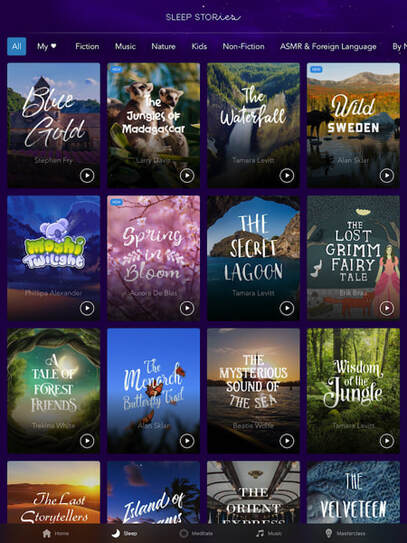 Back in the UK where she lives, Phoebe is known for her books and stories about sleeping in unusual, extreme and wild places. I quite like the fact that Calm didn’t hire a scientist or psychologist to methodically bore you to sleep, but rather a storyteller. “Storytelling is such an old tradition, it’s how knowledge and wisdom has been passed down throughout history,” says Phoebe. But hang on, aren’t you essentially writing stories so boring it puts people to sleep? “As a kid, you didn’t want a boring story, but there’s definitely a technique involved. There can’t be too much action or excitement, and it should take you on a journey, which is why trains, boats, rivers and forests work so well. Feedback suggests that most people fall asleep within five to ten minutes, but I get lots of emails from people around the world wanting to know more about the places I write about.” Places like the lavender fields of Provence, the jungles of Madagascar, the Mississippi River and the forgotten forests of Morocco. There are travel stories about oceans and deserts, safaris and night skies. There are train journeys aboard the Orient Express, the Trans-Siberia, and yes, our adventure aboard The Ghan. We both agree that stories are a far healthier alternative to medication and sleep aids. “These days, we often treat sleep as an inconvenience,” Phoebe explains. “There’s so much going on and instantly available that we can’t switch off, which only adds to the anxiety.” It’s why she turns off her devices at least an hour before bed, keeps her bedroom free of distractions, and is passionate about sleeping in the wild. “When it gets dark, you sleep, and when the sun rises, you wake up. It’s the natural rhythm of our bodies, and it makes you feel calm and rested.” Unlike Phoebe, the very thought of sleeping outdoors, exposed and alone on say, a mountain top, freaks my poor brain out. So I’ll ignore her advice and keep my iPhone handy, ready to load up a Calm sleep story, and let her words inspire a blissful lullaby.
After so many miles, misadventures and meat pies, I'm delighted to be launching my 9th book, The Great Australian Bucket List , available October 9th online and in bookshops throughout Australia and New Zealand. It's been a very long and very wild ride, packing in years of travel into six crazy months, and years of writing into the same. As for bringing along my family, two kids under five can only make the intense travel and writing easier right? Right. As with my previous books, I believe that essay-style stories inspire, and are best read on a printed page illustrated with beautiful photography. But I believe that practical information is important too, best accessed online where it can be easily and frequently updated. The Great Australian Bucket List follows this successful formula: a stunning, inspiring book supported by an extensive companion website - www.aussiebucketlist.com With any luck, both will have the same impact in Australia as the The Great Canadian Bucket List had in Canada: inspiring millions of locals and visitors to explore unique, one-of-a-kind destinations and activities around the nation (and becoming a smash bestseller as a result). From jungle surfing in the world's oldest rainforest to swimming with giant tuna, chasing ghosts in haunted prison cells to hiking the remote outback, Australia has buckets of amazing stuff to explore. Here's a quick peek at what I got up to: The book is published by Affirm Press, the fastest growing publisher in Australia, driven by passionate readers who believe in stories as much as I do. I have to give a shout out to my amazing sponsors and partners: Presenting Partner Ford Motors Australia, Oaks Hotels and Resorts, Jetstar Airways, World Expeditions, Journey Beyond, Discovery Holiday Parks, Move Yourself, Sunshades Eyewear, Tourism Tasmania and Queensland Tourism and Events. Thank you! The family travel project was an entirely different trip altogether. You can check it out at the online trip journal we custom-designed to record the adventure: www.esrockingkids.com. Along with our partners above, special thanks to Valco Baby, Keen, Footwear, Britax and Victorinox. I met so many wonderful people on my journey, and as always, the people I met (and the family I travelled with) shaped my experience. I learned so much about Australia, and myself. This is what travel does: new places stoke new emotions, new people stoke new ideas, new landscapes inspire new life stories. There's no word as yet if/when The Great Australian Bucket List will be available on shelves outside of Australia and New Zealand. I'd love nothing more than my Canadian, Global and Australian books to find their way to stores worldwide, but that's up to the gods, agents, and the publishing industry. In the meantime, you can buy it online anywhere through Book Depository (with free shipping worldwide) and in Australia online through Booktopia, Dymocks, Collins, Big W, KMart, Newslink, QBD or fine indie bookstores. As always, it's the perfect gift for everyone from kids to grandparents, and will appeal to all ages and interests. Thanks as ever for the support, and may your travels continue to be rich and fruitful.
Robin If you've been following me on social media, you've probably realized I'm travelling across Australia doing everything worth doing, research for two upcoming books, The Great Australian Bucket List and Esrocking Travel with the Kids. The journey has kept my family than hyperactive bees, and we kicked it all off in Melbourne. Here's some of the highlights: Take a Street Art Tour The laneways and arcades that snake through Melbourne’s CBD’s conceal a hidden city, one that is home to one of the world’s most renowned underground art and culture scenes. You might see glimpses of it walking around, but an organized tour will lead you directly to the most striking art and locations, and reveal the fascinating stories behind them. Once you learn about paste-ups, graffiti, yarn-bombing and blanking out, you’ll never look at any city the same way again. Old Melbourne Gaol Ghost Tour It’s a creepy enough building during the day, and that’s when it’s just a historical museum. At night, echo-chamber passageways and thick cells of the Old Gaol reveal a far more disturbing atmosphere, aided by the death mask of Ned Kelly and other convicts hanged on-site. A convincing storyteller tells true-life ghost stories as you tour the cellblocks, walking carefully in the dark or else you might trip over your imagination. Puffing Billy Old world travel has always been romantic. When this narrow-gauge track was decommissioned in the 1950’s, it was reinvented as a volunteer-run leisure railway, with steam locomotives taking visitors through Dandenong Ranges for picnics along the way. On-board, it’s a festive and family-friendly atmosphere, with guests encouraged to sit on the open-air windows with their legs in the breeze. Puffing Billy has become an icon, and a great way to explore nature outside the city. Eureka Skydeck's The Edge It’s the highest public viewing deck in the southern hemisphere, and the top 10 floors have 24-carat gold plated windows. The Eureka Skydeck gives visitors stellar 360-views of the sprawling city, and the latest attraction puts the streets (and the Oaks Southbank below) literally beneath your feet. The first of its kind, The Edge is a glass cube that extends out the 88th floor viewing deck, 285 metres above the ground. Sound effects of glass breaking add to the thrill. Melbourne Zoo’s Roar n’ Snore Overnight Camp 10,000 people a day can pack into the world renowned Melbourne Zoo. Imagine having the place to yourself at night when many of the animals are actually awake. The Roar n’ Snore experience not only allows this to happen, it includes guided behind the scenes tours, dinner and breakfast, early morning sessions with the zookeepers, and your chance to sleep in a canvas tent surrounded by the sounds of exotic animals. With special thanks to our partners: Ford Motors Australia, Jetstar Airways, Oaks Hotels and Resorts, and Discovery Parks.
|
Greetings.
Please come in. Mahalo for removing your shoes. After many years running a behemoth of a blog called Modern Gonzo, I've decided to a: publish a book or eight, and b: make my stories more digestible, relevant, and deserving of your battered attention. Here you will find some of my adventures to over 100 countries, travel tips and advice, rantings, ravings, commentary, observations and ongoing adventures. Previously...
July 2024
Categories
All
|

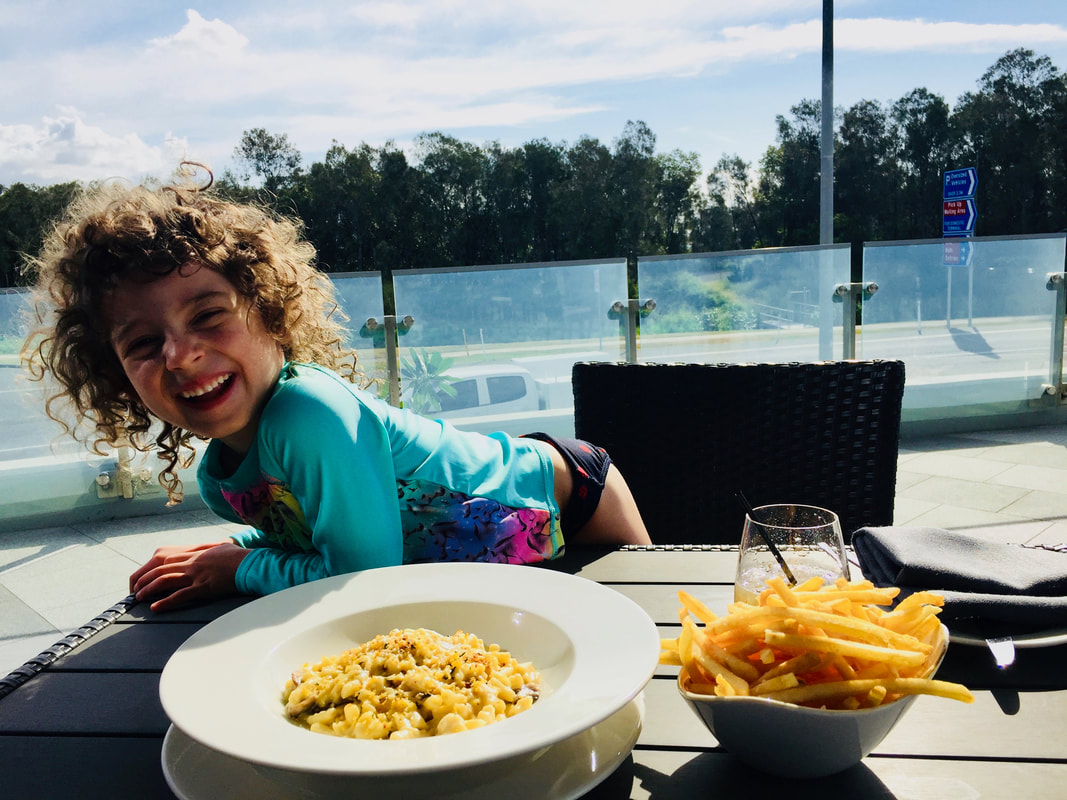
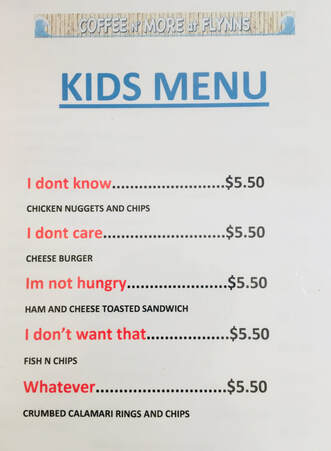
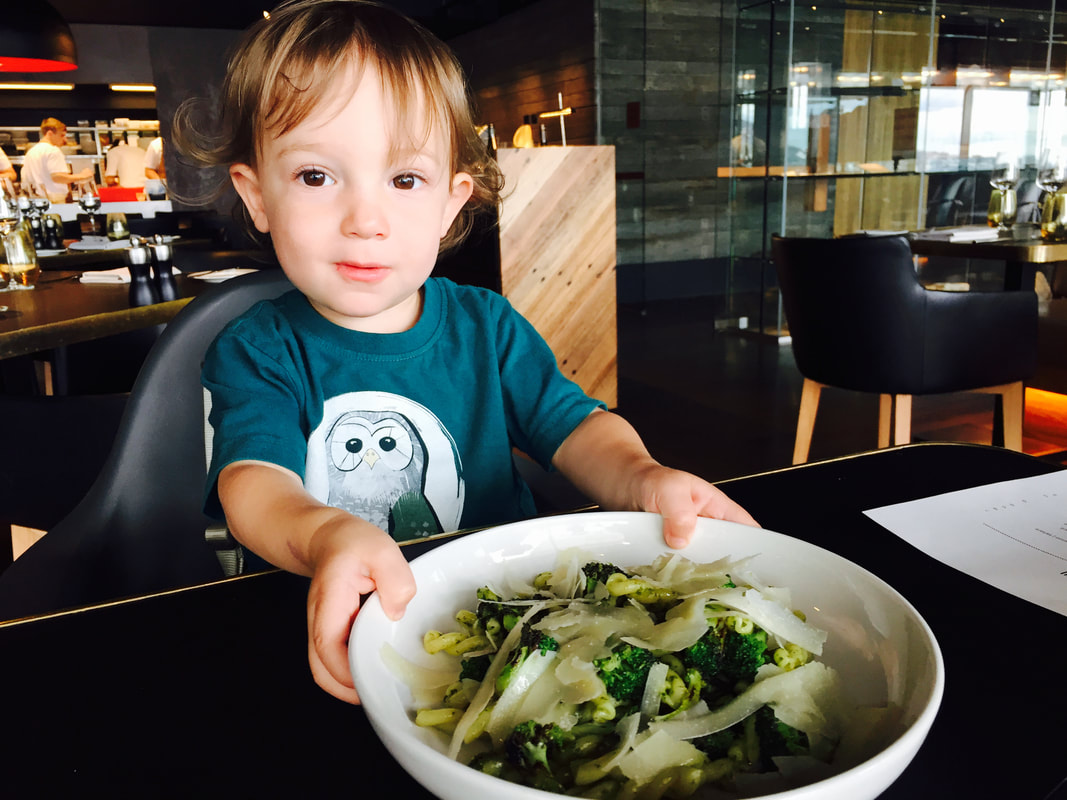


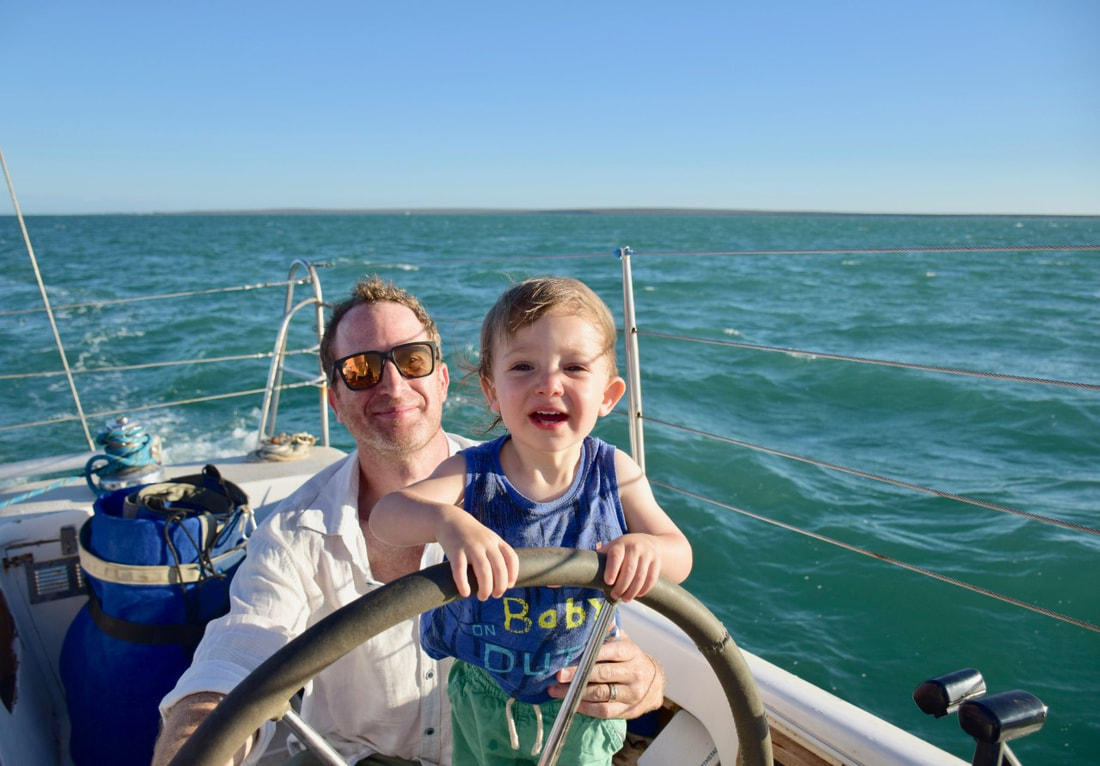
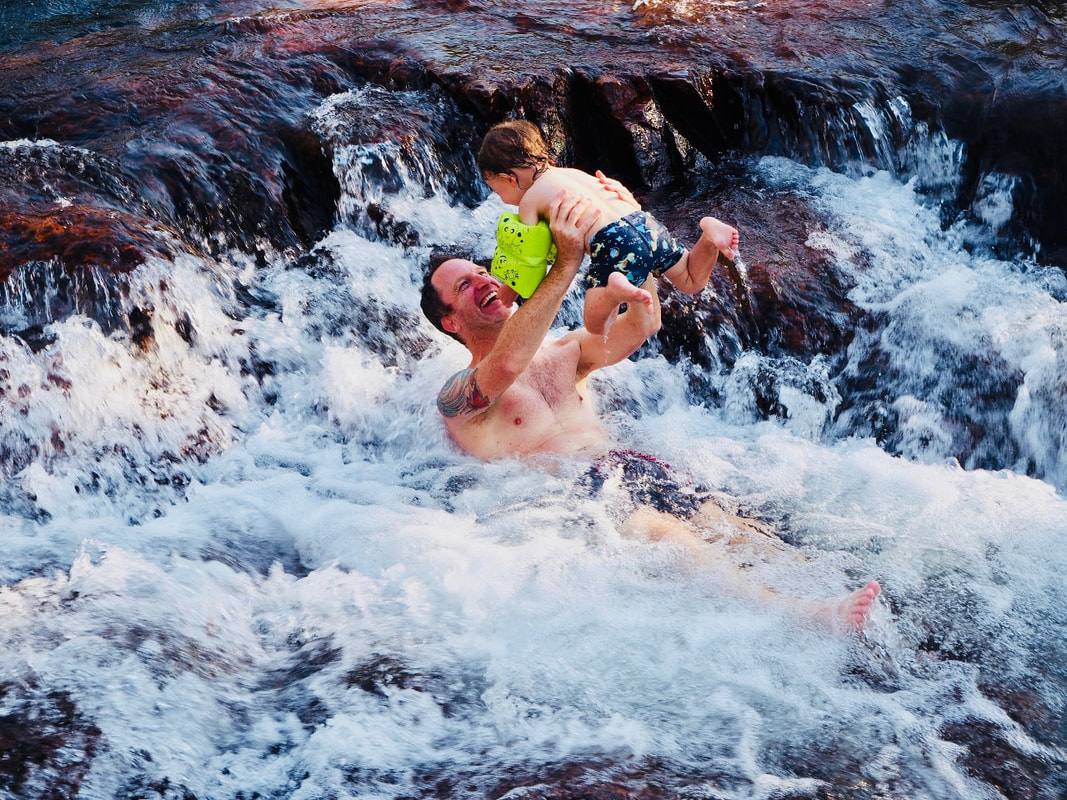
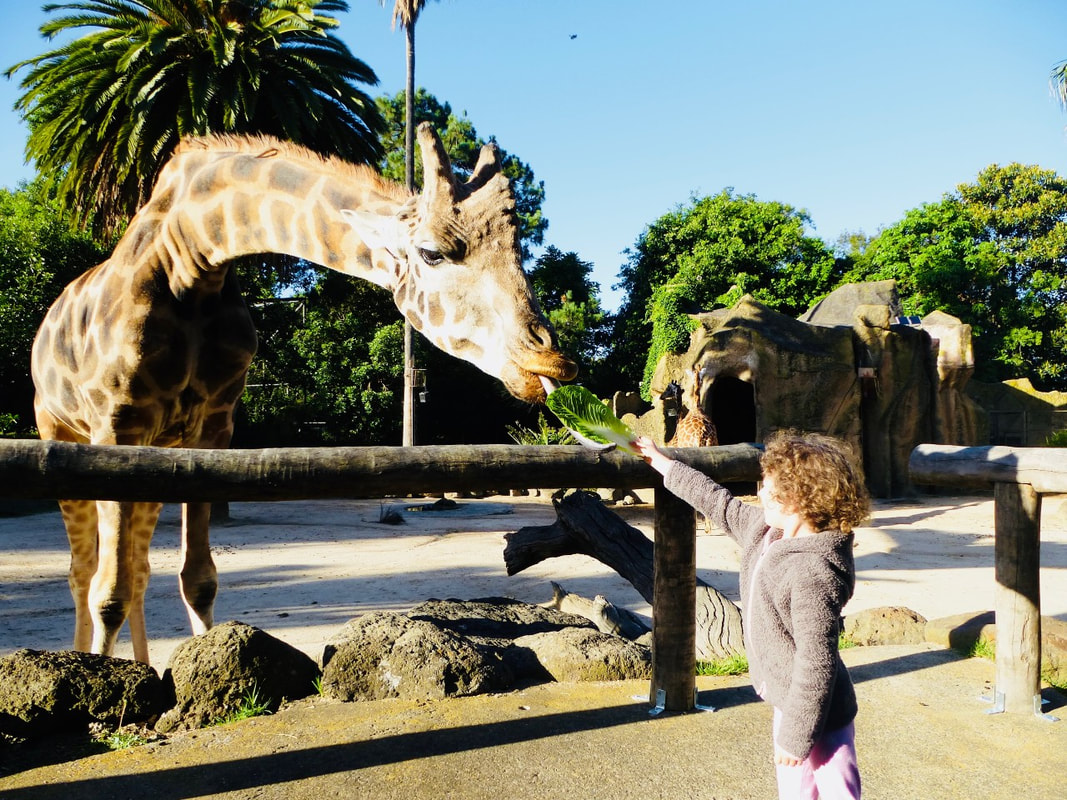
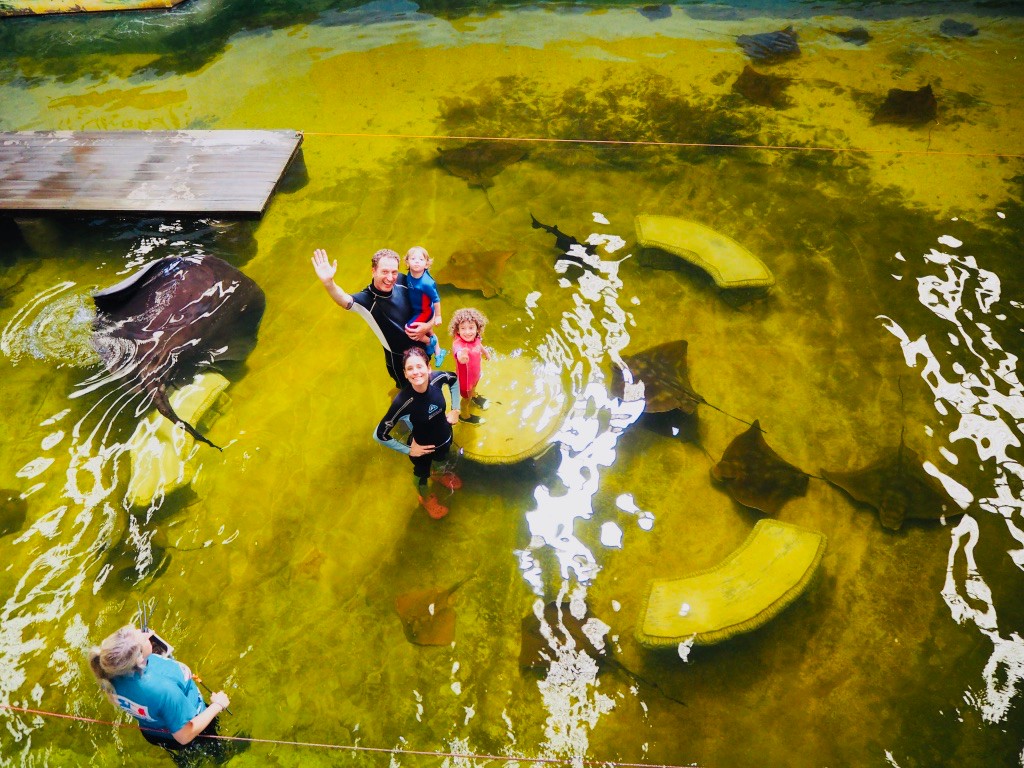
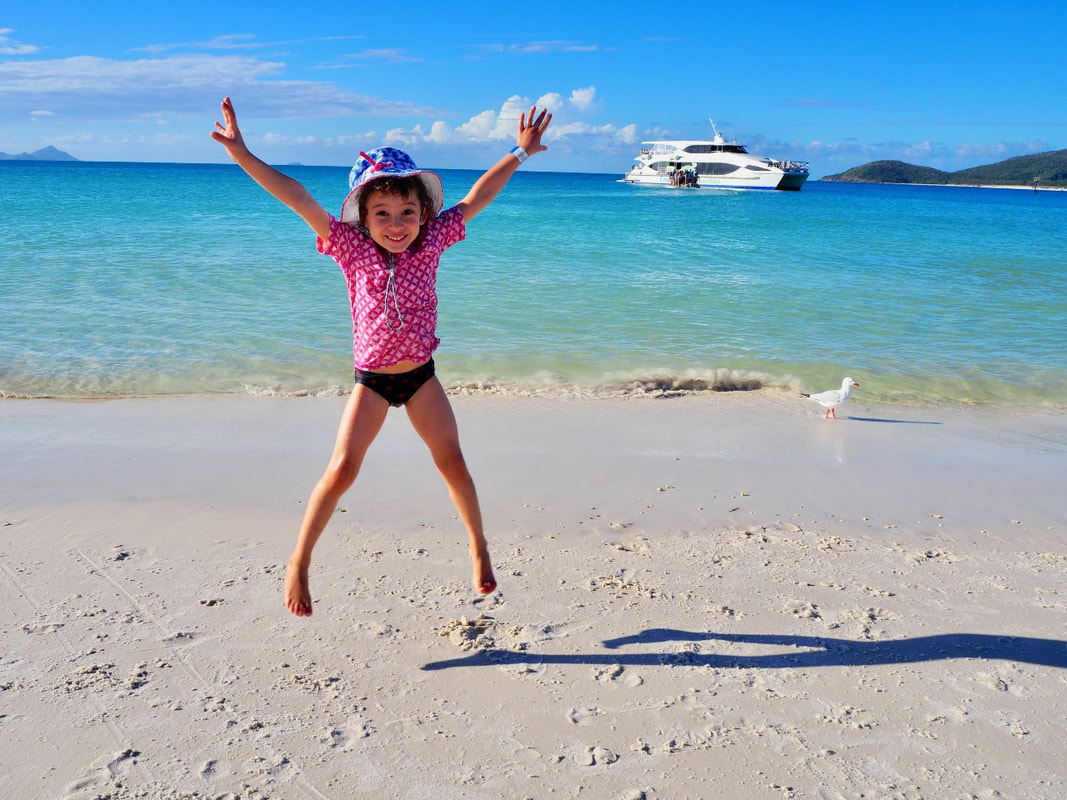
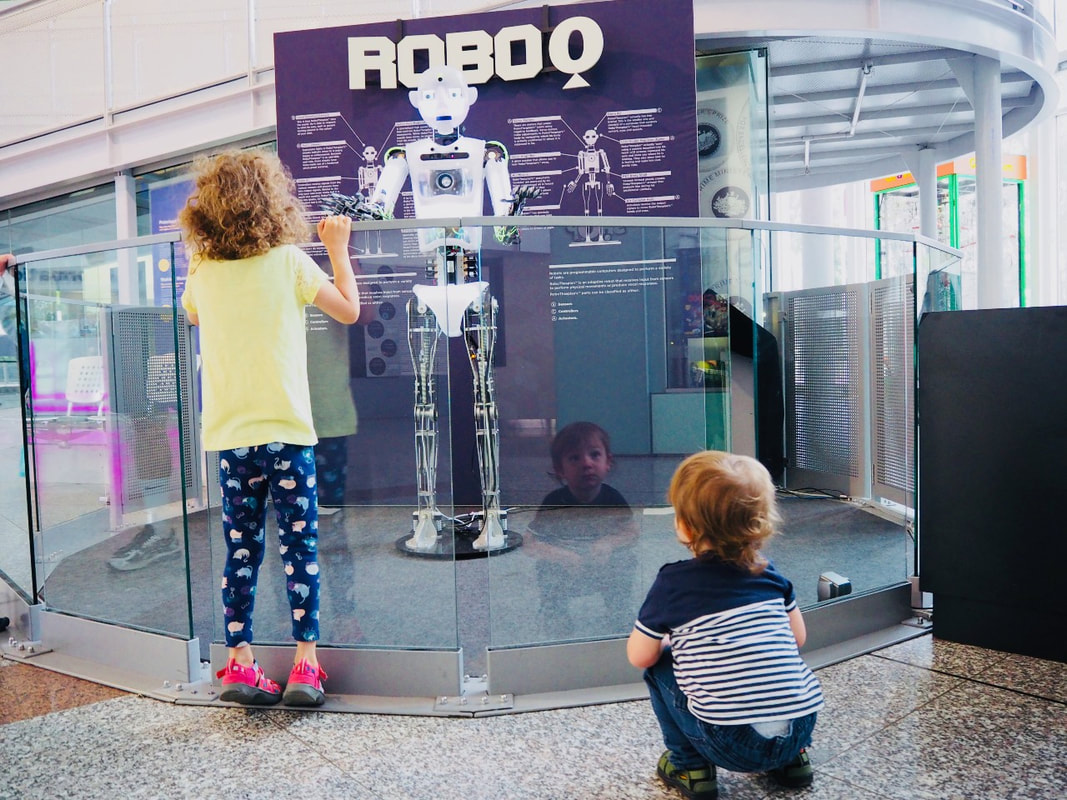
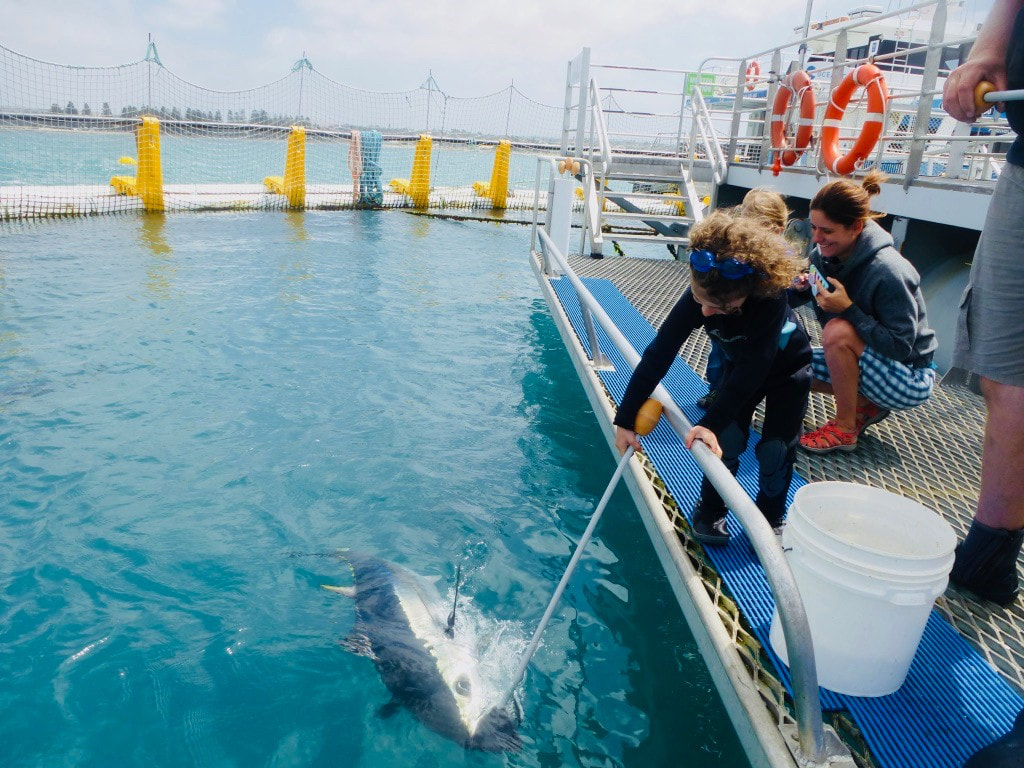
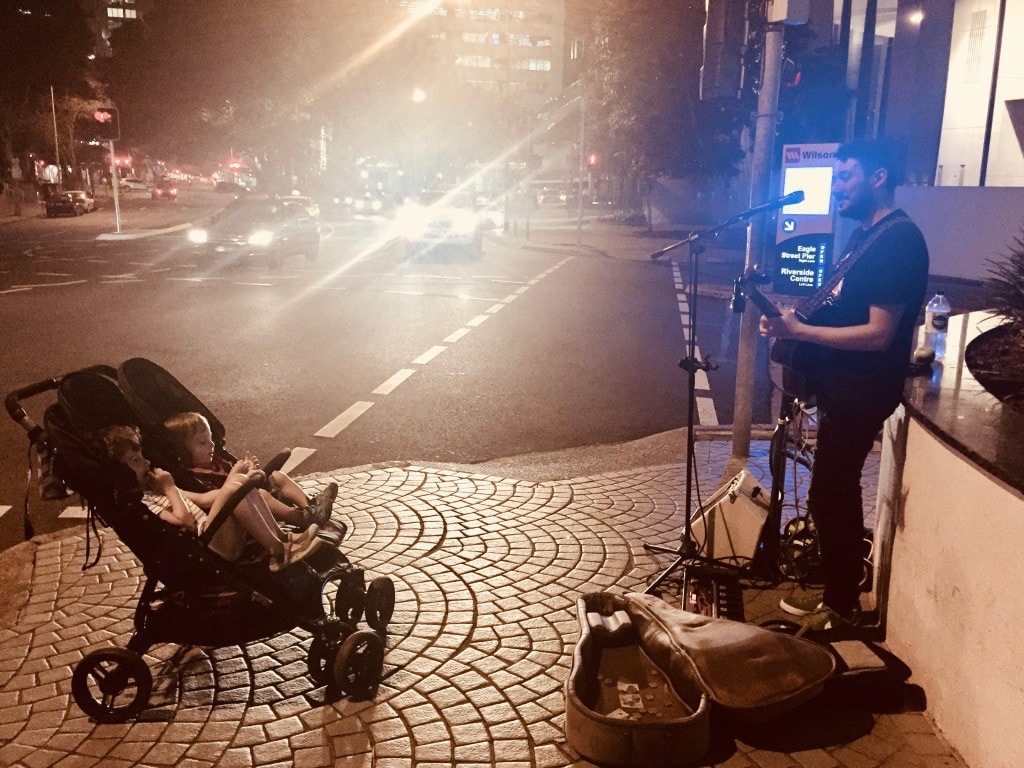
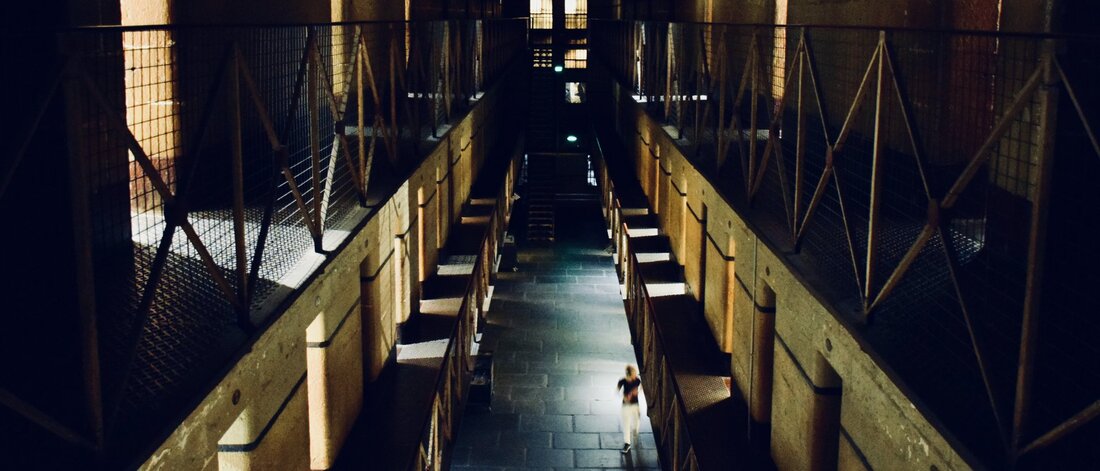
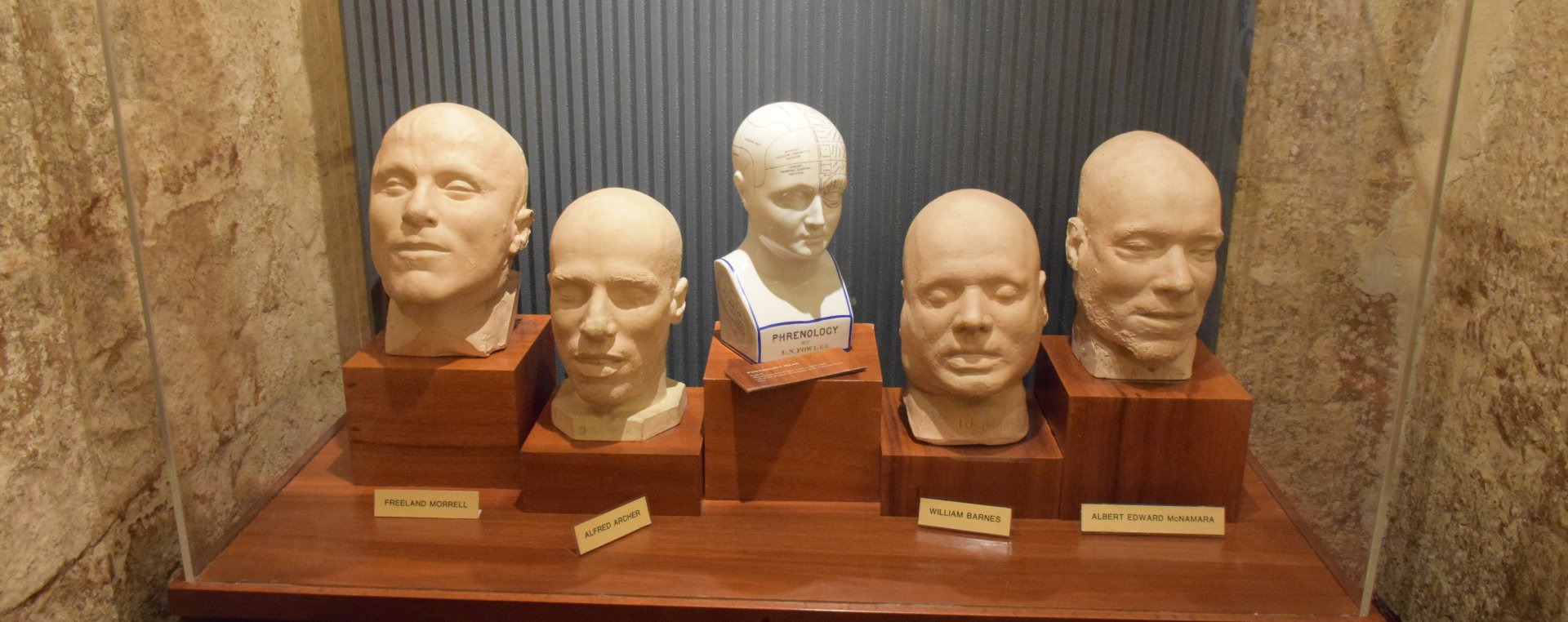
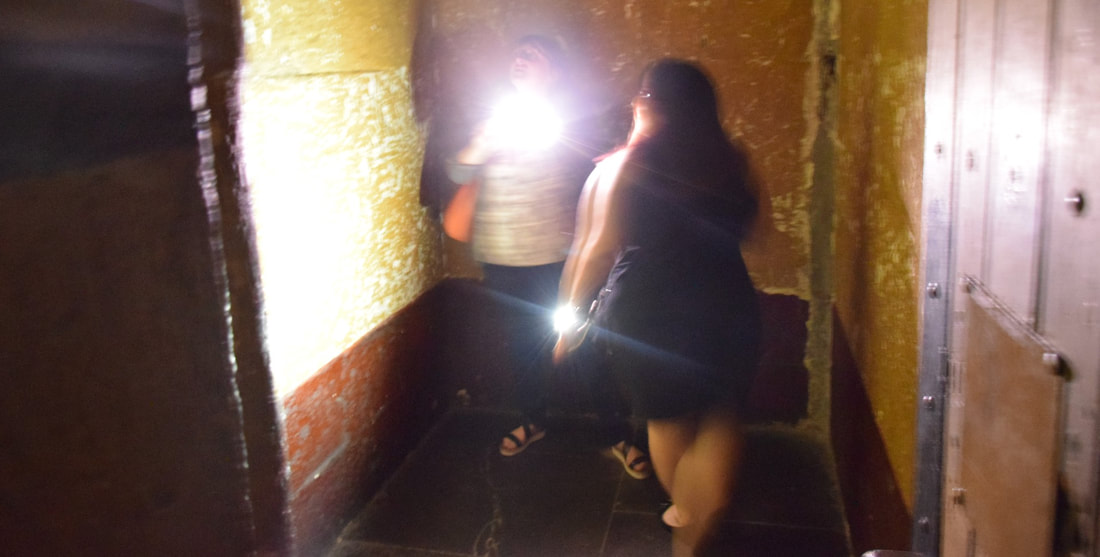
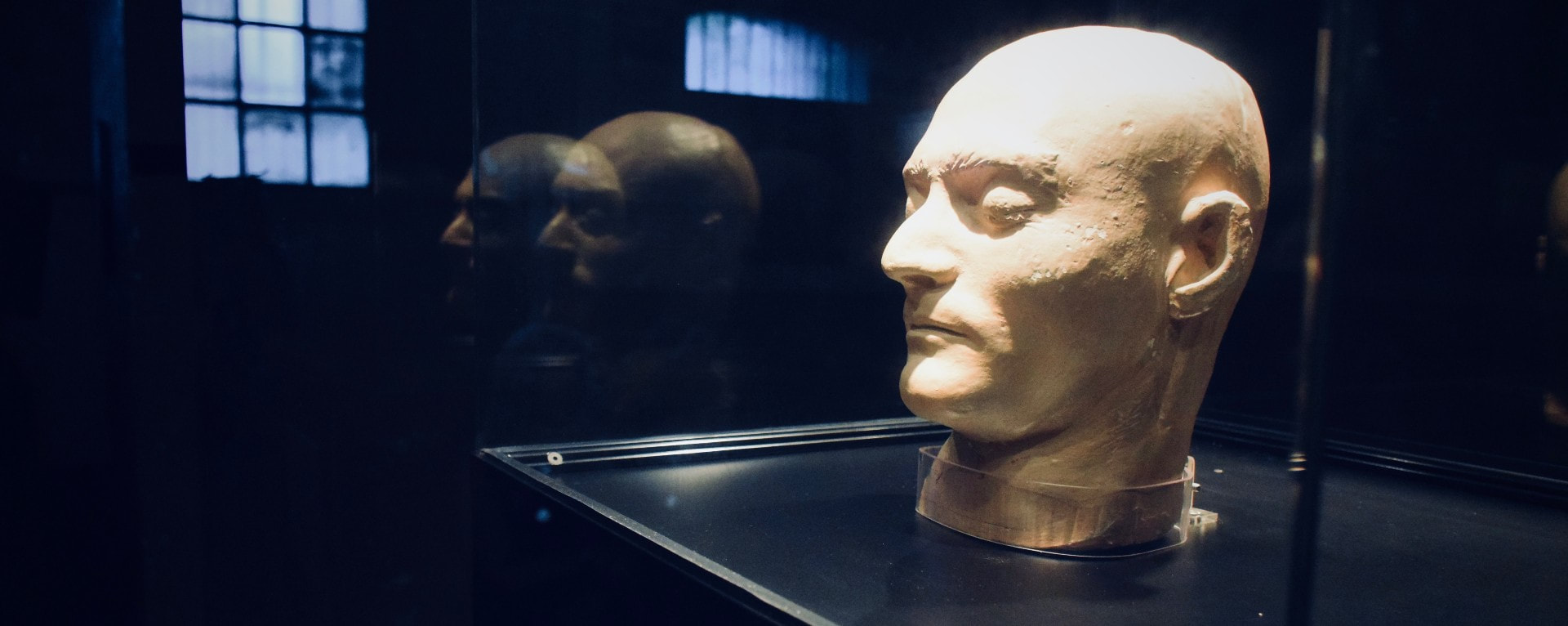
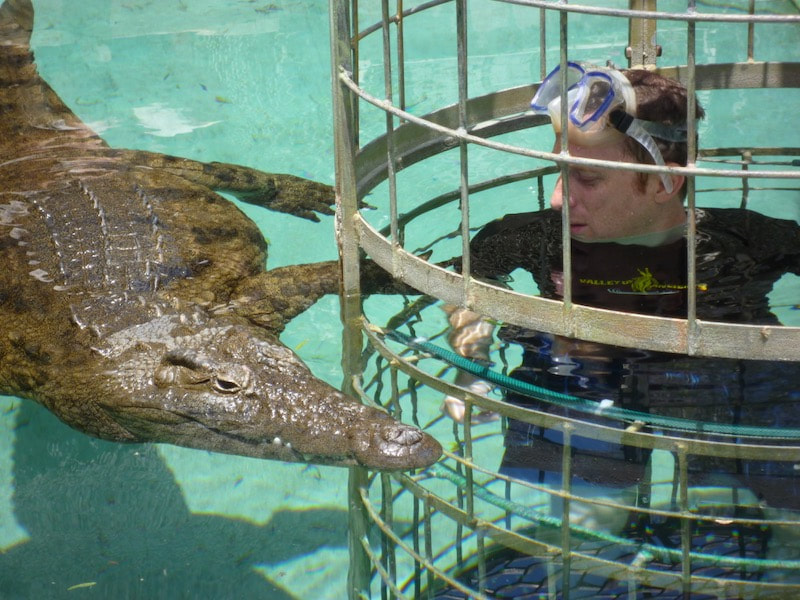
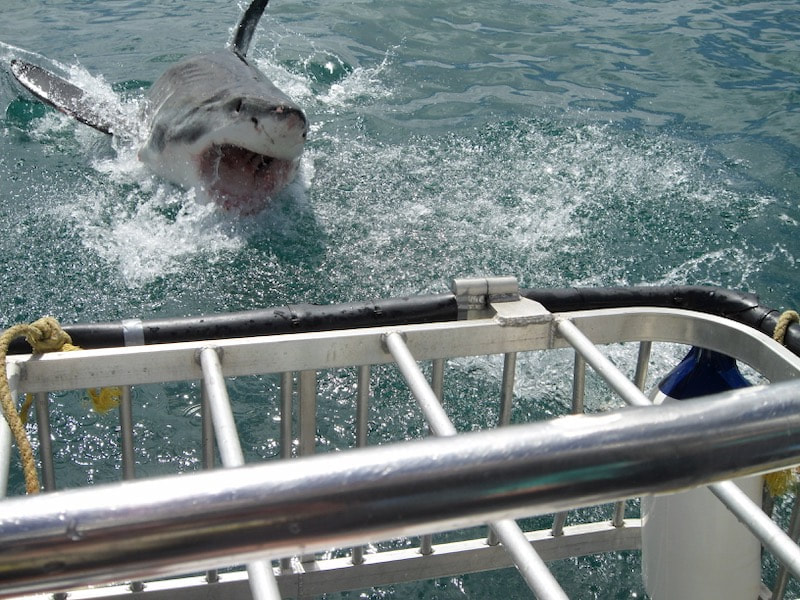
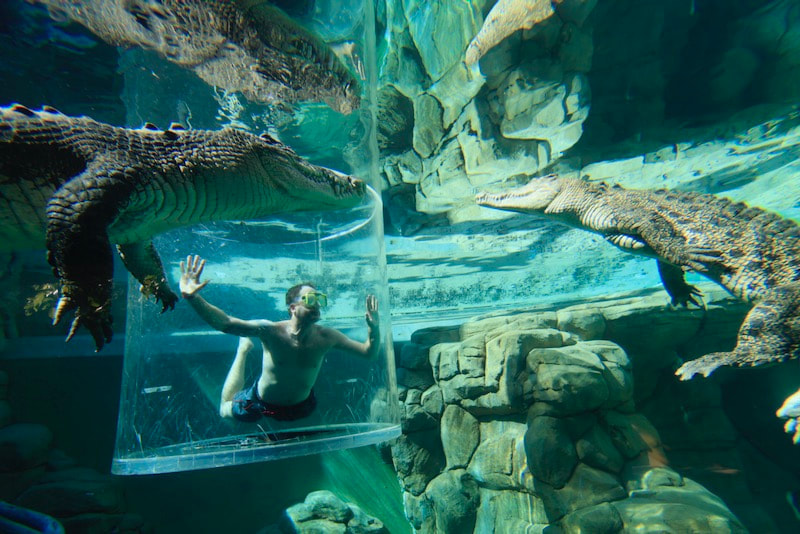
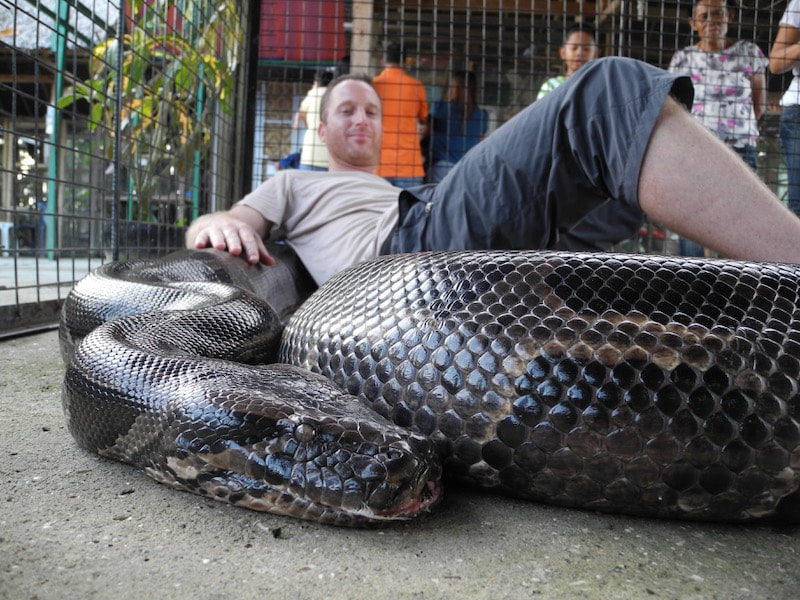
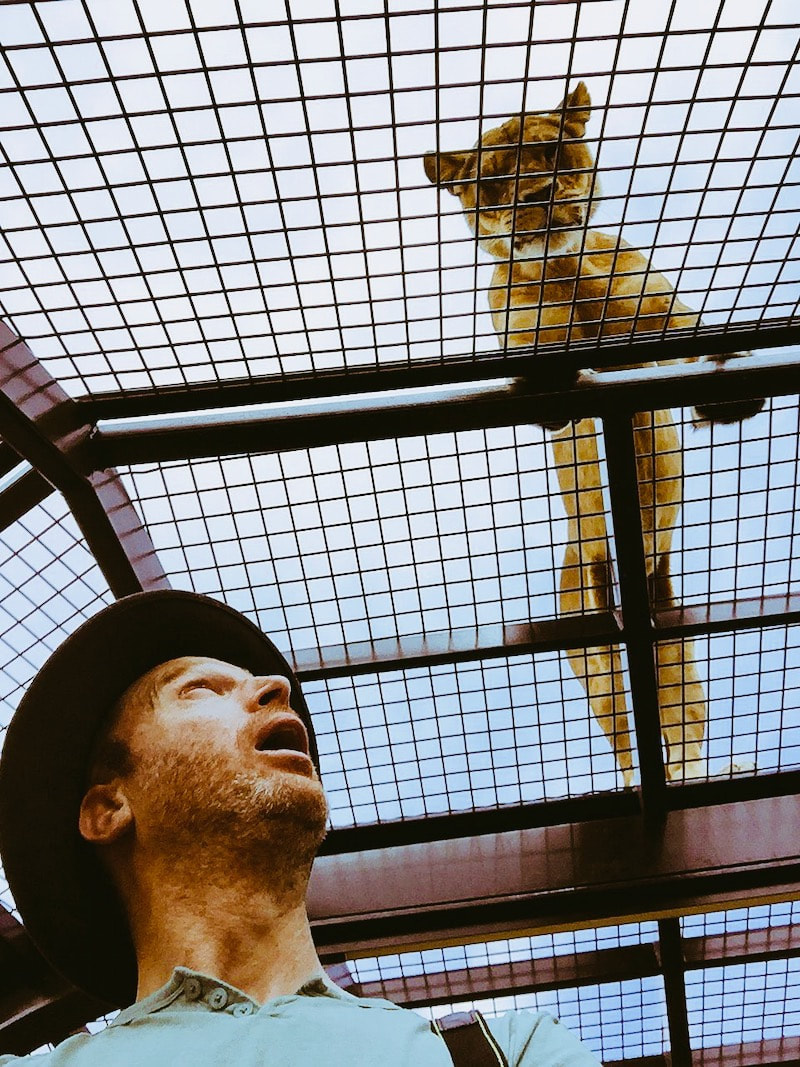

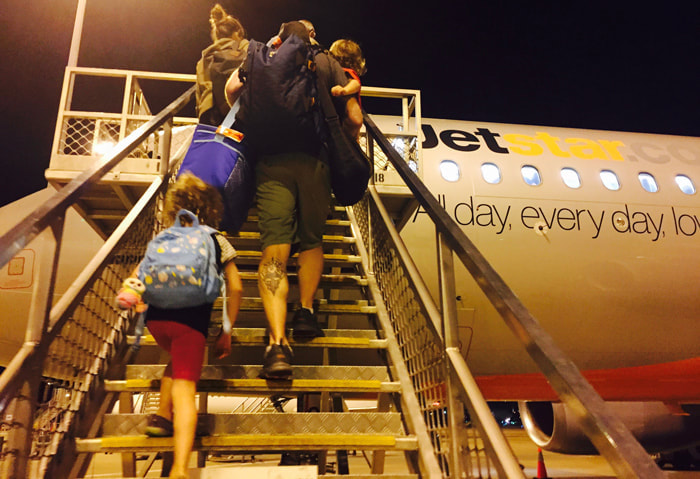
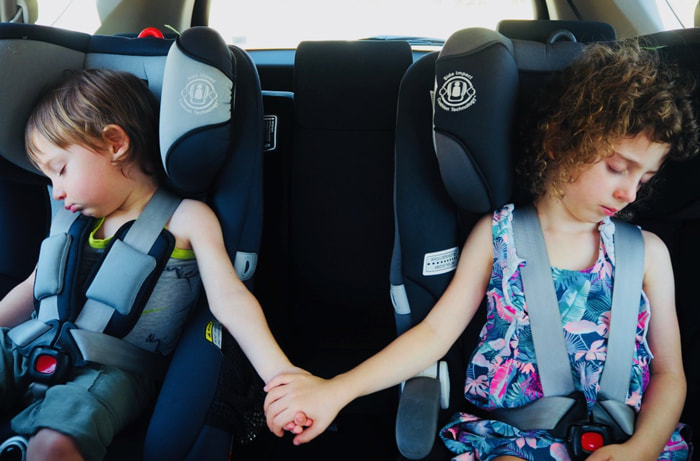
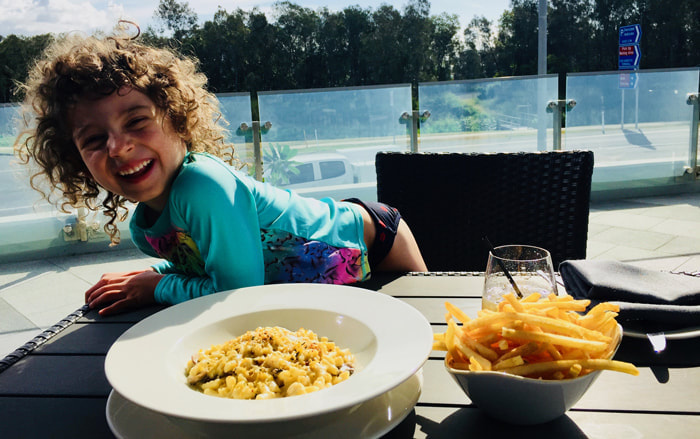
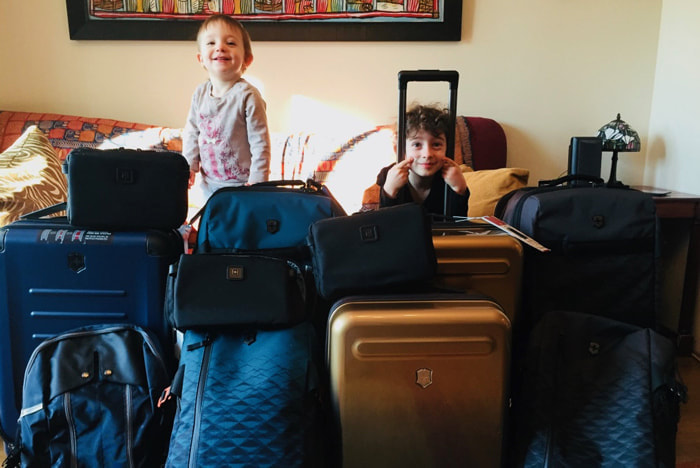
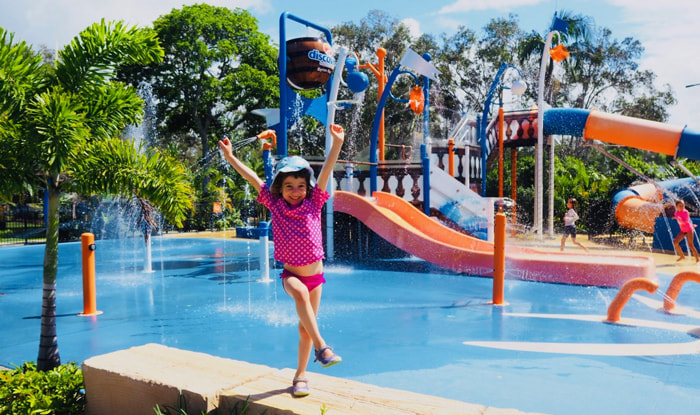
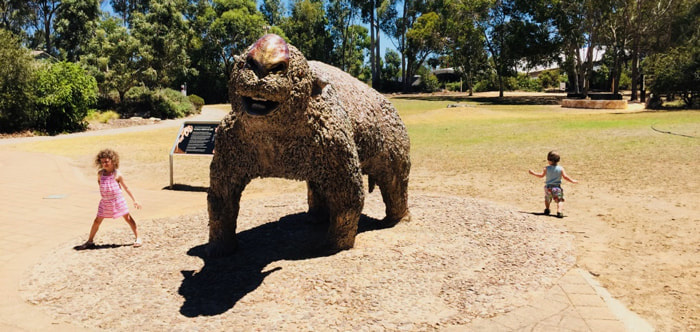




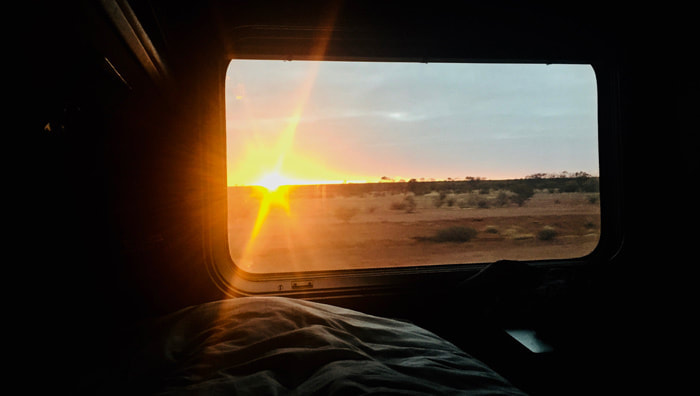
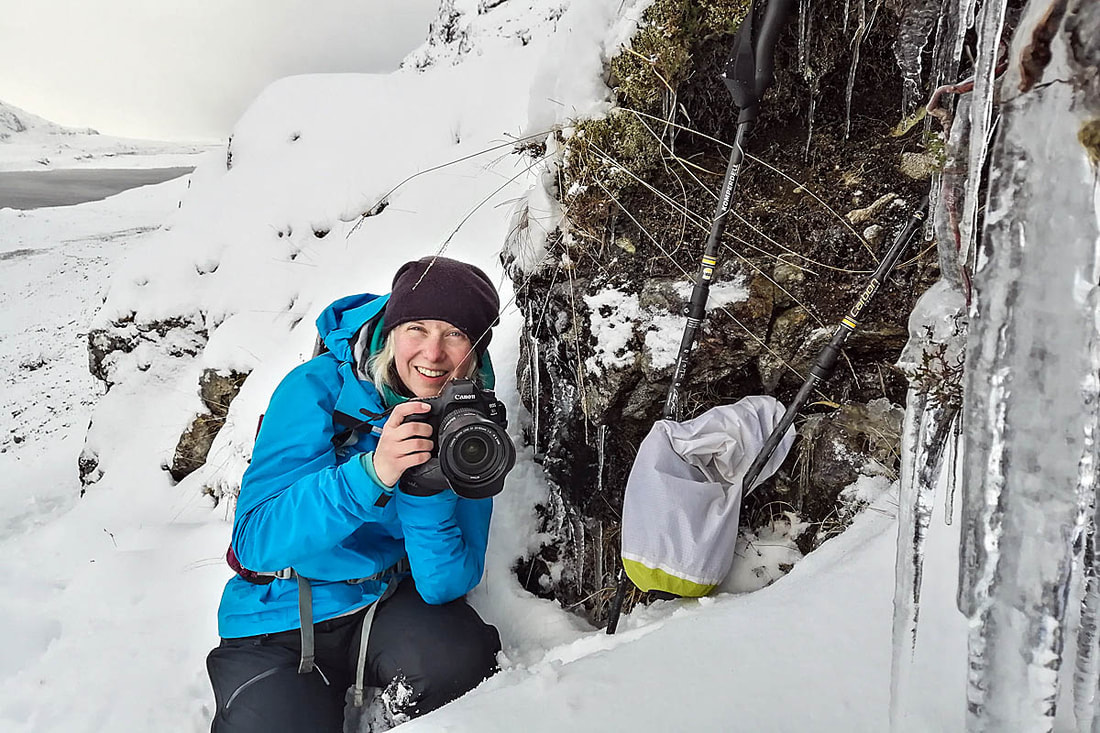
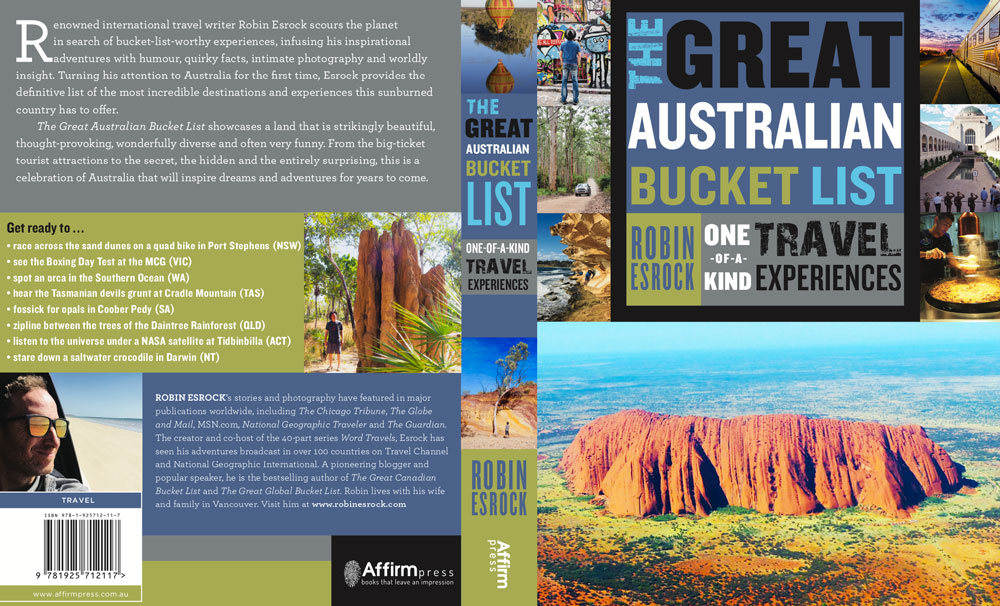


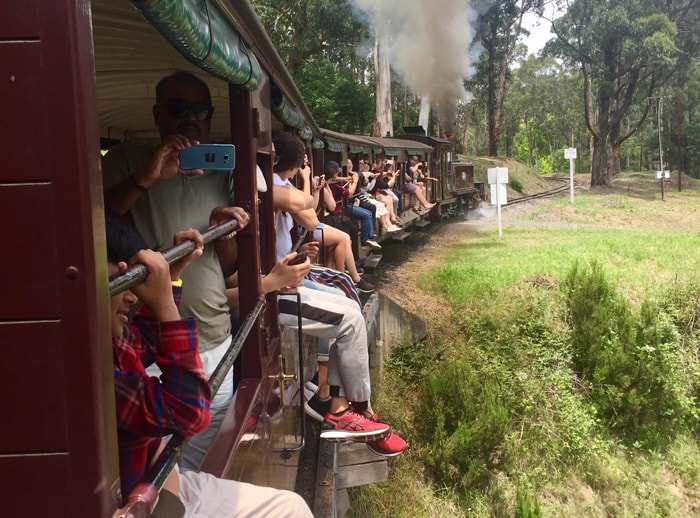
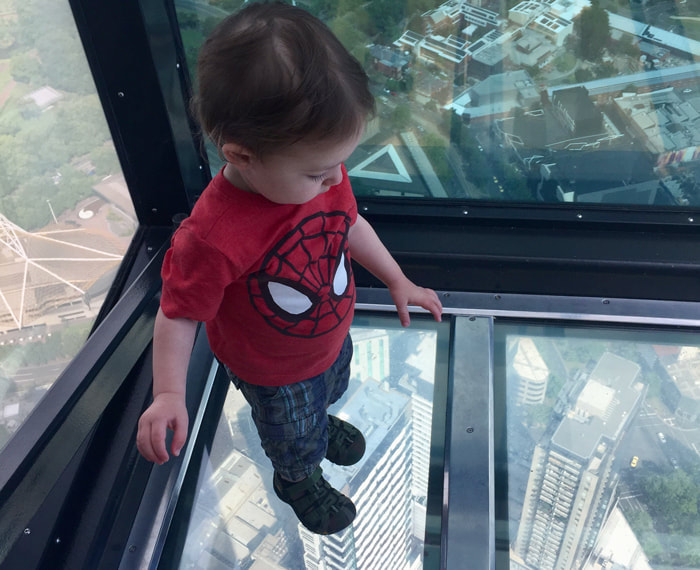
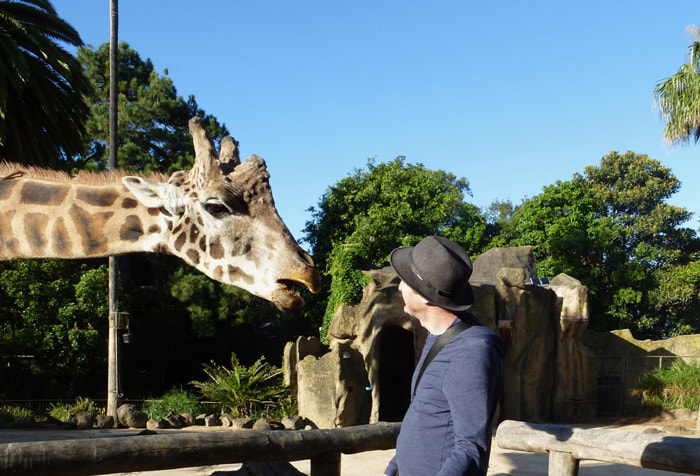
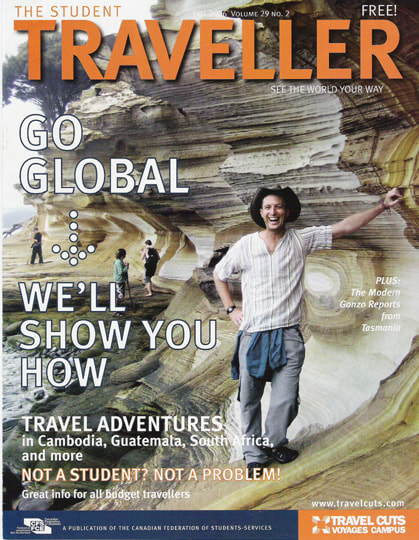
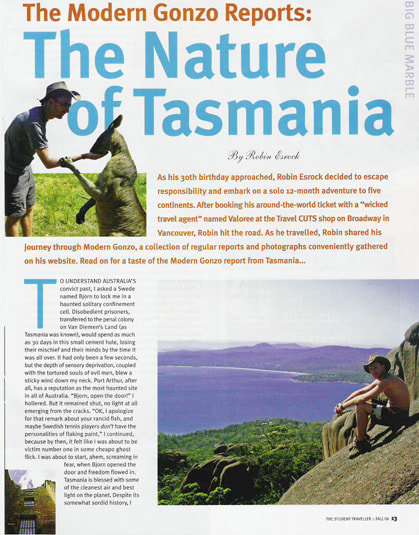
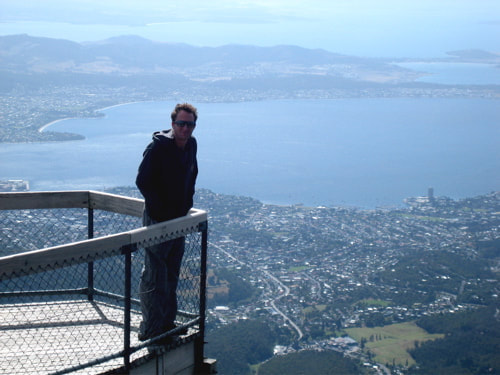
 RSS Feed
RSS Feed

